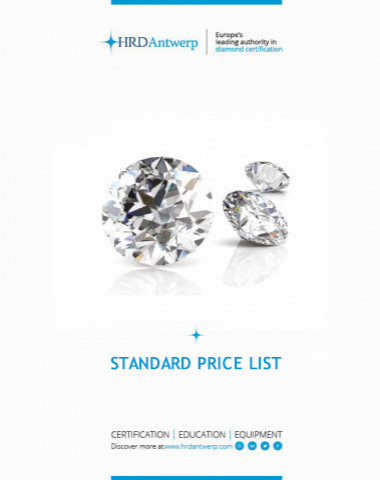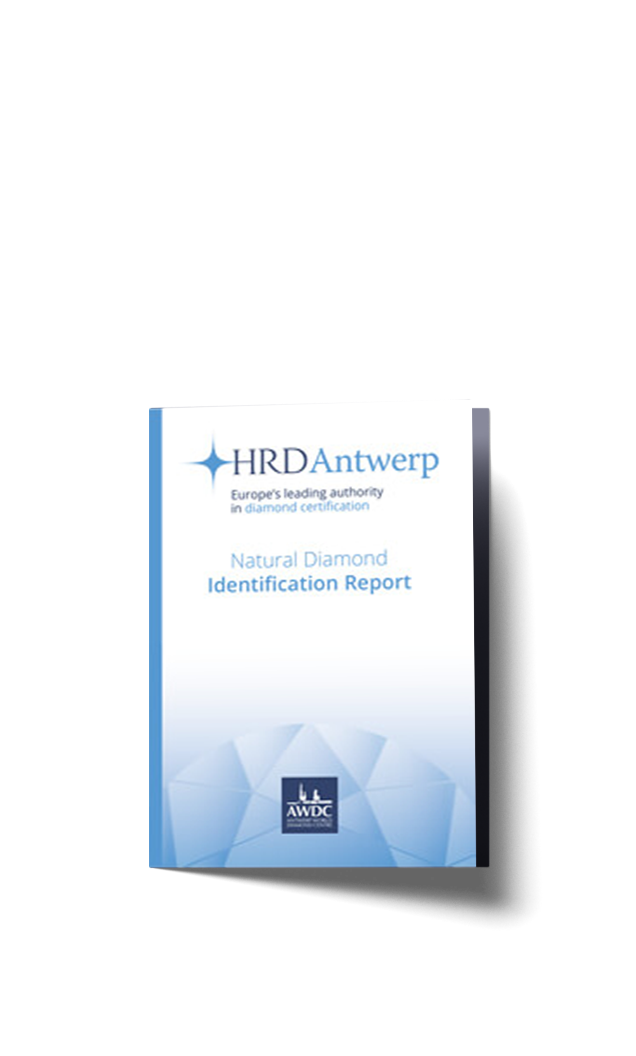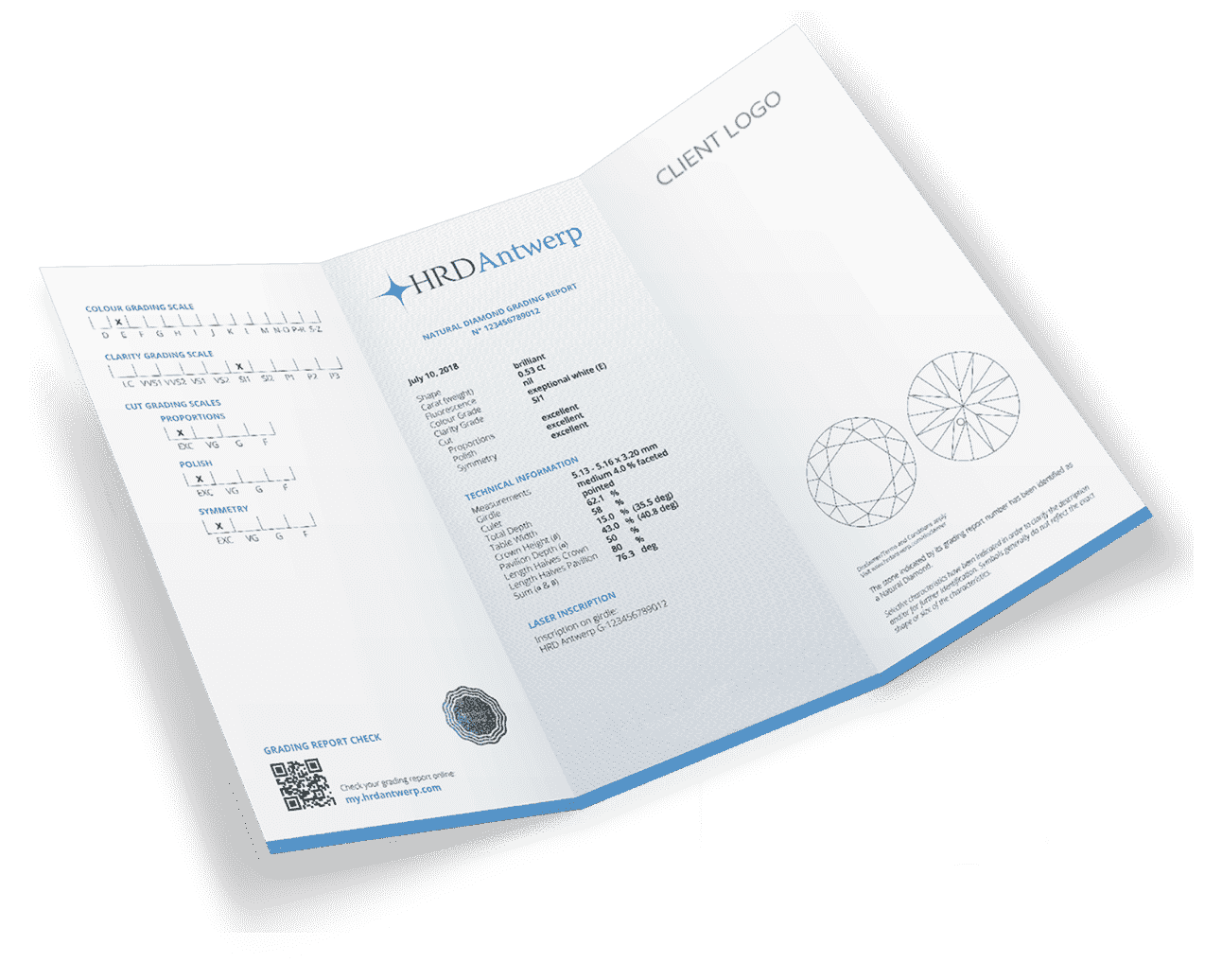FAQ
HRD Antwerp is a private foundation, established in 1973 as the Hoge Raad voor Diamant (HRD) or Diamond High Council, at the initiative of the Belgian government and diamond industry representatives in Antwerp. HRD Antwerp is the leading authority in diamond and jewellery certification.
With diamond laboratories located in Antwerp (HQ), Mumbai and Dubai, HRD Antwerp uses the most sophisticated technology and extensive expertise of their in-house research department.
HRD Antwerp also organises internationally recognised educational courses in various industry disciplines, creates tailor-made programmes and offers individual coaching.
An HRD Antwerp grading report has numerous advantages, as it is the leading authority in diamond and jewellery grading.
- Utmost Security: An HRD Antwerp grading report has exclusive security features such as micro text, fluo marks, a line structure, a hologram and unique tamper-proof structured paper. These features are discretely incorporated and only detectable by loupe and under UV light.
- Data Availability: A digital copy of every grading and jewellery report is available for ten years.
- Quality That Inspires Confidence: The integrity of the HRD Antwerp grading process is absolute, inspiring confidence while purchasing your precious diamonds and jewels. Their diamond lab applies an uncompromising operating code and incorporates some of the most sophisticated technology and qualified graders available. HRD Antwerp’s extensive in-house research department updates all processes according to the latest industry developments.
- Strict Anonymity and Objectivity: The absolute objectivity of the grading results is guaranteed through a double coding system, as one set of codes is assigned to the owner, whereas the other set follows the diamond to the lab. Strict anonymity guarantees strict objectivity.
Each diamond is unique, comparable to how each fingerprint is unique. This makes it rare and desirable. The value and quality of a diamond is based on a universal grading standard, defined by the 4Cs of a diamond: carat, colour, clarity and cut.
A diamond or gemstone’s weight is denoted as ‘carat’. One carat is equivalent to 200 milligrams or 100 points. For example, if a single diamond weighs 0.01 carat in a parcel, there will be a total of 100 diamonds. Similarly, if two diamonds have an individual weight of 0.50 carats, the two diamonds combined will be 1 carat.
At HRD Antwerp the weight of a diamond is measured up to 1/1, 00,000 of a gram.
All-natural diamonds show traces of their growth, which tend to be internal characteristics. The clarity grade is determined by the location, number, size and contrast of these characteristics when examined with a 10x triplet loupe. The clarity scale ranges from the rare clarity grade ‘Loupe Clean’ to ‘Pique’.
The HRD Antwerp Clarity Scale
- Loupe Clean or LC;
- Very Very Small Inclusions subdivided into VVS1 and VVS2;
- Very Small Inclusions subdivided into VS1 and VS2;
- Small Inclusions subdivided into SI1 and SI2;
- Pique subdivided into P1, P2 and P3.
An HRD Antwerp diamond grading report will contain a plotting diagram which captures the size, number and location of the internal characteristics.
The colour of a diamond is based on the colour range, starting from D and ending with Z. The colour grade ‘D’ denotes a colourless diamond. In contrast, the ‘Z’ colour indicates a prominent presence of yellow colour in the diamond. Diamonds graded at HRD Antwerp are compared to a series of predetermined colour master stones for assigning the appropriate colour grade.
Some diamonds may have visible tints of brown or grey in them. A diamond having such tones will have the term ‘ECG’ meaning Equivalent Colour Grade in an HRD Antwerp grading report. Another connecting factor contributing to the value of a diamond is ‘fluorescence’.
Fluorescence is seen in a diamond when exposed to any Ultraviolet light source. Standard fluorescence colours viewed in diamonds include blue with an intensity reported as nil, slight, medium or strong. If a diamond has strong fluorescence, it may emit a slightly bluish tint when viewed in sunlight.
Fancy colour diamonds have different primary colours such as red, blue, pink, orange, green, black, purple, yellow and brown. Red is one of the rare colours, while brown and yellow are more common.
The cut determines the beauty of a diamond. The shape of the diamond should not be confused with the cut. The shape of a diamond is based on its outline, while the cut is dependent on proportions, polish and symmetry.
The cut grade is divided into four categories: Excellent, Very Good, Good and Fair. The interaction of light plays a significant role when determining the cut grade.
“The livelier and brighter the diamond, the better the cut grade.”
The most popular shape is Round, which is combined with the facet arrangements of a Brilliant Cut. The Round Brilliant Cut has a total of 57 to 58 facets. Other popular shapes and cuts include the Step Cut, also known as the Emerald Cut, the Princess Cut, the Oval Cut, the Pear-Cut and many more. In the end, what matters most is what appeals to the eye.
Certification is the 5th unofficial ‘C’. Internationally recognised gem laboratories such as HRD Antwerp are well-known for their grading reports. The independent summary of the diamond’s quality makes it a valuable document for your precious diamond or jewellery. When the 4Cs are combined with the 5th ‘C’ – Certification, it ensures peace of mind when buying or investing in diamonds or jewellery.
The ‘Grading Report’ is also commonly known as the ‘Certificate’ for a diamond or jewellery. Internationally recognised third-party gem laboratories, such as HRD Antwerp, issue grading reports for diamonds and jewellery.
HRD Antwerp issues reports for natural diamonds, jewellery and laboratory-grown diamonds.
Each report issued by HRD Antwerp is a symbol of Trust and Transparency. HRD Antwerp grading reports contain detailed information concerning the 4Cs of a diamond, jewellery setting styles, metal purity and identification of the stone.
HRD Antwerp offers an array of grading reports which includes grading reports for natural diamonds, jewellery and laboratory-grown diamonds.
With the information present in the reports, an experienced appraiser can assign the right value of the diamonds and jewellery for insurance or resale purposes.
- Know the value – By discovering the technical characteristics of your diamond or jewellery graded by an internationally recognized gem laboratory.
- Protect yourself from fraud – It is practically impossible to identify a natural diamond from a laboratory-grown, treated or imitation diamond with the naked eye. A report will give you an unbiased analysis of your stone’s origin.
- Peace of mind – Have 100% certainty that the diamond you purchased matches its description.
A third-party grading report issued by an internationally recognized gem laboratory is a value-added feature, as well as a security feature.
Uncertified diamonds or jewellery do not necessarily guarantee the quality of the products, making them risky.
Self-Certified products by experts might ensure that your diamond or jewellery has been checked for its quality. It is advisable to have an additional report by a third-party gem laboratory.












